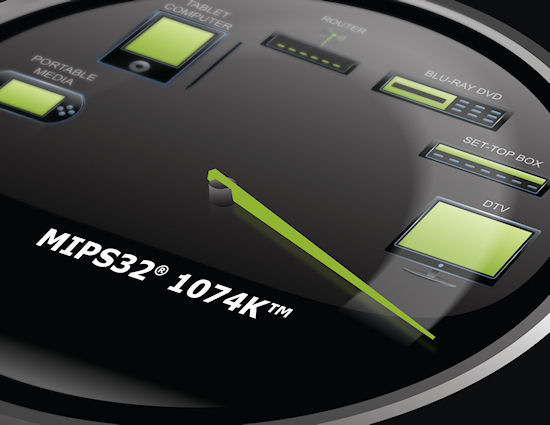The third way
Ever since Intel revealed its plans to produce smartphone chips and ARM started making CPU designs powerful enough to run mini-PCs, the convergent processor market has been viewed as a two horse race - ARM's David versus Intel's Goliath. But there is at least one other significant player.
MIPS not only licenses out its own processor designs - much like ARM - but it has its own instruction set too. This means its proposition is wholly outside the x86 and ARM ecosystems. Today it has launched a new design - the MIPS32 1074K - that claims 2.5x the performance of Intel's Atom in a smaller Silicon footprint and is multicore.
This positions the 1074K squarely against ARM's Cortex A9 multicore design, which is starting to appear in SoCs such as NVIDIA's Tegra 2. Furthermore, MIPS has historically been frozen out of the mobile space by the effective monopoly ARM has had on operating systems - they've all been ARM-only. Android changes all that as it's instruction-set agnostic.
We spoke to Art Swift - marketing VP - and Mark Throndson - director of product marketing - to get a sense of why this launch is a big deal for MIPS. We were told that MIPS has been around for a couple of decades and is the market leader in chips for consumer electronics applications such as set-top-boxes. It's apparently doing well as the last three quarters have each set all-time licensing revenue records.
While MIPS has its heritage in high-performance computing Swift questioned the "perceived" advantage ARM has in low-power designs. He pointed out that MIPS designs also feature prominently in networking devices and in LTE baseband. One of its biggest licensees is Broadcom. It also provided many of the designs behind SGI chips and the chip inside the Sony PSP.
See the slide below for a taste of how MIPS plans to exploit the Android opportunity. Note Imagination Technologies is positioned as an ally, not a competitor. The combination of of Android and MIPS strength in 4G amounts to a next gen mobile opportunity and we were told that mobile handsets running MIPS SoCs will start to make an appearance in the first half of next year.











